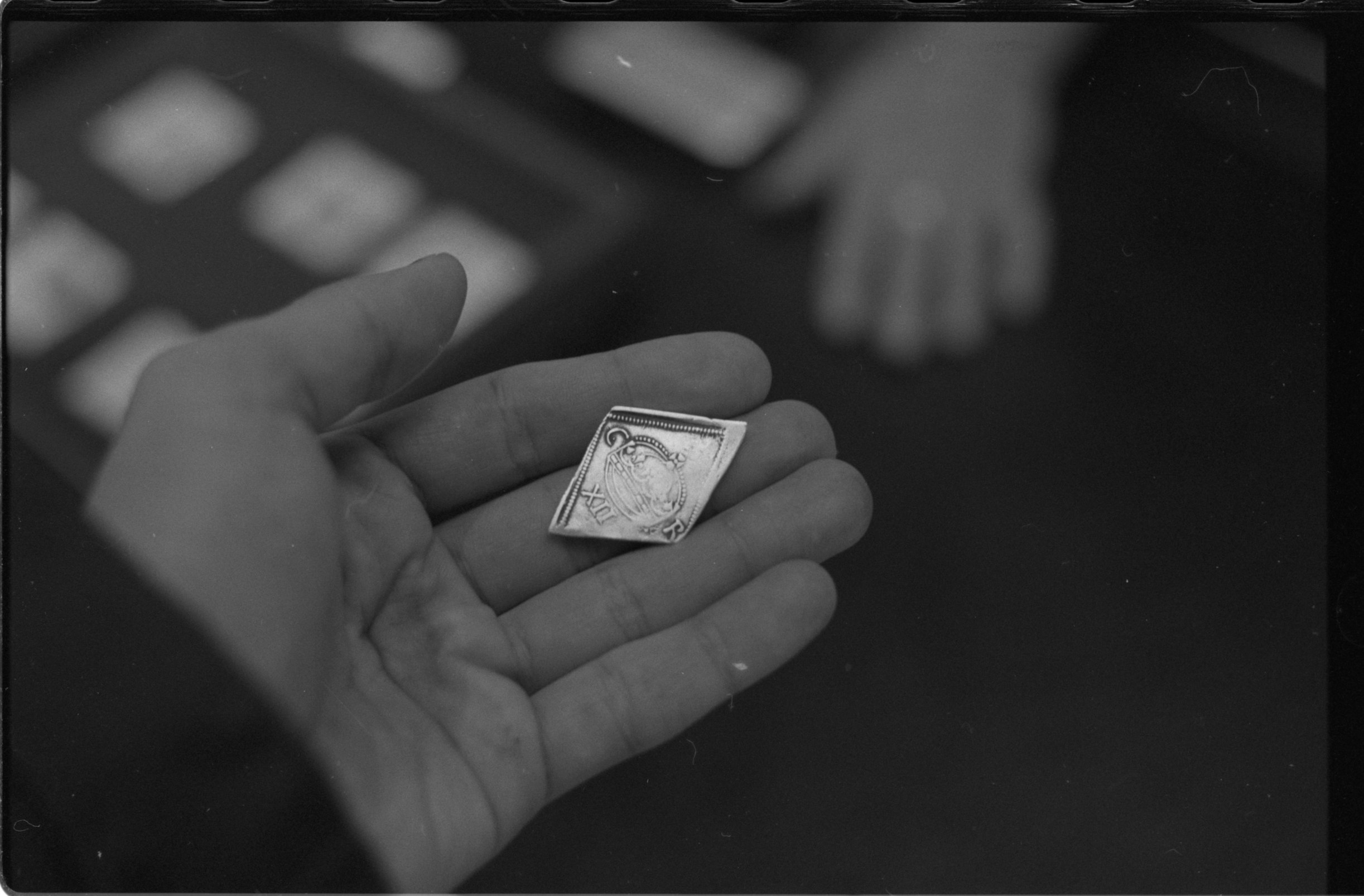Art as collateral
Making art mean something again
After the theft of thousands of objects from the British Museum by a former curator, what does it mean for another to go missing in the name of art? And when artefacts are routinely attacked by political protesters, can a museum use its collection as a weapon?
The attacks on paintings orchestrated by groups like Just Stop Oil have played on the public’s instinctive fear of destruction. They have given rise to a renewed collective desire to protect cultural artefacts. These emotions, however, have clashed with a growing suspicion of art’s historical contexts among the professional custodian class. Facing complex intellectual challenges, their response has been to “retain and over-explain” any artwork deemed “problematic”. This tussle over the value of artefacts has reduced art to the status of mere collateral in political negotiations. For all the fervour of the culture wars, the evolving worth of artefacts held by institutions for posterity remains largely unexplored.
In June, the artist Ilê Sartuzi stole an English Civil War coin from the British Museum. His heist required months of preparation. He made twenty visits to the museum’s coin room, studying its layout and the movements of the security guards. The silver coin minted in Newark in 1645 is part of the museum’s handling collection. Visitors are encouraged to touch and examine it close-up under the supervision of volunteers. Sartuzi inspected the object casually. While one of his accomplices distracted the custodian, the artist swapped the Newark coin for a replica unnoticed.
We know this story not from a police investigation but because Sartuzi meticulously documented his endeavour and displayed the footage of this sleight of hand as part of his MFA graduation exhibition at Goldsmiths in South London. His eight-minute film consists largely of austere animated 3D sketches and explanatory intertitles. Yet it is almost as gripping as the 1999 museum heist film The Thomas Crown Affair whose object of value is a Monet. Alongside two projection screens, Sartuzi also showed two Newark coins mounted in a red velvet-lined display case.
Sleight of Hand is a double con. Not only did Sartuzi quite literally play a coin trick in the tradition of seaside entertainers, he also played with the law and the museum’s standards of critique. He repeated his blink-and-you’ll-miss-it performance at the coin desk when the artist-thief Sartuzi turned out not to be one at all. A sheet of typewritten paper narrated the project’s conclusion in the Goldsmiths display: “put the original coin in my pocket/go down the stairs to the South Hall/place the coin in the donation box/leave the museum”.
The practice of challenging the museum’s integrity using its very collection has a rich tradition that reached its peak in the 1990s. Artists like Andrea Fraser and Michael Asher offered direct, unflinching accounts of the institution’s corruption and the intellectual and commercial complicity of artists and curators. In recent years, however, the legacy of institutional critique has descended into hysterical calls for the restitution of artefacts and the decolonisation of collections. Such arguments are often made in the spirit of openness and aren’t prima facie baseless or unreasonable. However, their entirely mindless deployment in the mediation of artefacts, such as in the recent contextualisation of Kensington’s Albert Memorial as “offensive”, or the faux political naivety professed in debates, like that about the future of the Parthenon marbles, have hardly been edifying to the public. The museum, meanwhile, has entirely co-opted the project of critical inquiry into its condition, turning it into a profitable administrative farce.
Sartuzi’s slight yet precise gesture challenges the museum’s intellectually dishonest, self-regarding examination of its legitimacy. The school of art at Goldsmiths has been a hotbed decolonial theory. The Brazilian Sartuzi could thus have been expected to aim for, for example, the British Museum’s collection of Marajoara pottery. Arguments about the status of pre-colonial Brazilian artefacts in the Museum’s collection have not yet made the news. At a time when identitarian claims are in intellectual fashion, Sartuzi could have carved out a niche for himself as the restorer of his ancestorial tradition.
He chose, instead, to pick up an English coin whose status as a priceless treasure is questionable. The 17th-century rhomboid silver wafer was the subject of forgeries so frequent that they prompted the establishment of the Bank of England. Even in the British Museum, the Newark coin was one of over two million uncatalogued or improperly documented objects in the institution’s care.
Sleight of Hand is thus in part a challenge to the British Museum’s ability to adequately account for English, let alone world culture. It makes no ideological demand in this vein, however. It would fail had it extended one. The Museum’s former director Hartwig Fischer who resigned after the thefts of over two thousand objects went unnoticed has just been appointed to lead a new museum in Saudi Arabia. The British Museum, meanwhile, is enjoying a wave of goodwill in its fundraising efforts to secure the collection.
What distinguishes Sartuzi’s stunt from the debates on restitution is his manifest interest in the object at hand itself. The artist professes an interest in the coin’s history and meaning as constitutive of the notion of money and the kind of ritualistic belief that invests objects with indisputable, lasting value. His intervention is thus primarily aesthetic, not least by his immediate, tactile handling of the coin and the crafting of its replica. The installation at Goldsmiths was sparse but rich. It did not, however, contain the customary dull theoretical or explanatory essay. Instead, it instilled empathy for the artist’s intellectual interest in the coin and a desire for the silver object even in a critic wary of institutional critique’s burn. Few museums can hope to inspire such levels of engagement.

Scan of 35mm film of the original coin being manipulated by the artist in one of the many visits to the British Museum: courtesy of the artist.
A different tussle over the value of artworks in museum collections is playing out in the Netherlands. In 2015, the artist Ahmet Öğüt realised the 1848 proposal of the Russian revolutionary anarchist Mikhail Bakunin for building a battle barricade. Bakunin believed that assembling stacks of paintings from the collection of Dresden’s National Museum in the streets would prevent Prussian soldiers from squashing the socialist uprising in the city. He reasoned that nobody would destroy priceless artworks in the name of ideology. Öğüt’s version of Bakunin’s Barricade is now in the collection of the Stedelijk Museum in Amsterdam. It consists of paintings selected by the artists from the institution’s collection, as well as a jumble of fences and road and construction paraphernalia.
In May, a group of student and cultural activists asked the Stedelijk to loan Bakunin’s Barricade for their planned protest action in support of Gaza. Öğüt had sold the work to the museum on the condition that it would be made available for such occasions, albeit with the possibility of substituting its constituent paintings with copies.
The Stedelijk says that it engaged with the activists in good faith. It offered them a version of the barricade made of replicas, not the original artworks by Nan Goldin and Käte Kollwit from its collection that make up Öğüt’s work. The protesters, however, weren’t satisfied and declined, taking to social media to denounce the museum. The institution replied with a comprehensive statement motivating its decision and proclaiming its solidarity with Gaza between the lines.
Anyone who has watched orange paint dripping from the glass protecting the Rokeby Venus at the National Gallery after Just Stop Oil attacked the Velazquez painting knows that Bakunin’s trust in the Prussians’ reverence for art was misplaced. Today’s Barricade loan request tests each party’s commitment to the value of historical cultural artefacts in the present.
Öğüt stipulated that the Stedelijk should lend his work to groups of the public at times of general unrest and crisis. He has made a career of making such grand public gestures and promises, for example, by withdrawing from the 2014 Biennale of Sydney in protest of the board’s connections to Australia’s refugee detention facilities. The cultural activists in Amsterdam, meanwhile, believe that merely protesting the war in Gaza outright warrants the destruction of an original work by Kazimir Malevich. The Museum, finally, is unabashedly committed to growing its cultural capital by associating its brand with popular causes and bringing public debates on Gaza onto its premises.
Apart from Bakunin, none of these actors believe in art. Öğüt’s constellation of objects has value only in a dead museum that has given up on aesthetic worth and replaced it with a system of market valuations, insurance claims, and theories of symbolic capital underwritten by marketing specialists. On the actual barricades, Bakunin’s Barricade is aesthetically useful only after it has been destroyed.
Öğüt’s attitude to historical artefacts is in stark contrast with that of Sartuzi’s performance. His failure to negotiate a meaningful contract of sale is a cop-out. That the Barricade could be made and remade using any constellation of museum-grade objects or their copies betrays the artist’s profound lack of interest in their fabric. This work is consequently of no value as the intellectual collateral in brokering the peace for Gaza.
It does, however, do more to cultivate a popular understanding of the aesthetic and material value of artistic objects
The activists in Amsterdam could have learned this much by observing Just Stop Oil’s museum antics. These fail to turn the public’s reverence for artistic heritage to benefit the natural environment because they forget why museum goers care about paintings in the first place. Sartuzi’s Sleight, granted, claims no revolutionary potential. It does, however, do more to cultivate a popular understanding of the aesthetic and material value of artistic objects. Sartuzi critically invests this value and, like Öğüt, bars no holds. He does, however, retain control over the object, leaving the field open for a critical reconsideration of its future.
Enjoying The Critic online? It's even better in print
Try five issues of Britain’s most civilised magazine for £10
Subscribe














